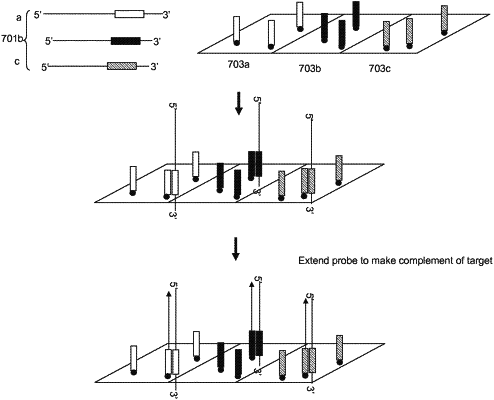| CPC C40B 50/06 (2013.01) [C12Q 1/6837 (2013.01); C12Q 1/6844 (2013.01); C12Q 1/6858 (2013.01)] | 14 Claims |

|
1. A method for amplifying a plurality of targets, the method comprising:
(a) hybridizing each target to a first complementary support bound probe in an array comprising a plurality of support bound probes, where probes of the same sequence are present in the same feature and wherein different targets hybridize to different first probes in different features;
(b) extending the first probes using the hybridized targets as template to obtain extended first probes;
(c) removing the target;
(d) ligating an adapter to 3′ end of the extended first probes, wherein the adapter comprises a top strand that is attached to the extended first probes, and a bottom strand that is hybridized to the first strand, wherein the adapter comprises an RNA polymerase promoter;
(e) transcribing multiple RNA copies of the extended first probe using RNA polymerase;
(f) allowing the copies of the extended first probe to hybridize to probes of the array in the same feature; and
(g) analyzing the copies to determine the sequence of the targets.
|